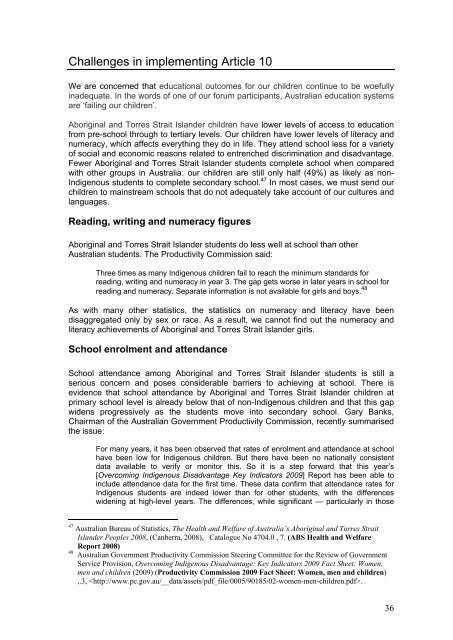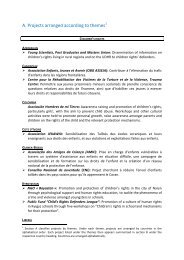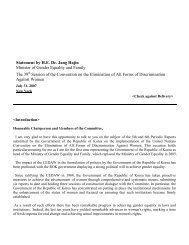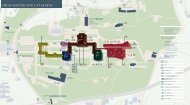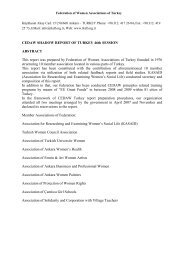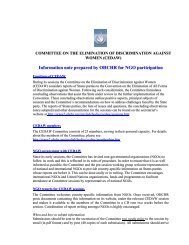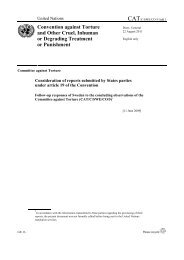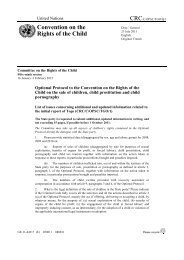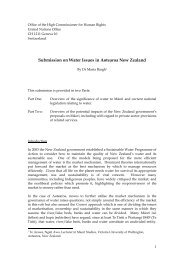Australian Aboriginal and Torres Strait Islander Women's Parallel ...
Australian Aboriginal and Torres Strait Islander Women's Parallel ...
Australian Aboriginal and Torres Strait Islander Women's Parallel ...
You also want an ePaper? Increase the reach of your titles
YUMPU automatically turns print PDFs into web optimized ePapers that Google loves.
Challenges in implementing Article 10We are concerned that educational outcomes for our children continue to be woefullyinadequate. In the words of one of our forum participants, <strong>Australian</strong> education systemsare ‘failing our children’.<strong>Aboriginal</strong> <strong>and</strong> <strong>Torres</strong> <strong>Strait</strong> Isl<strong>and</strong>er children have lower levels of access to educationfrom pre-school through to tertiary levels. Our children have lower levels of literacy <strong>and</strong>numeracy, which affects everything they do in life. They attend school less for a varietyof social <strong>and</strong> economic reasons related to entrenched discrimination <strong>and</strong> disadvantage.Fewer <strong>Aboriginal</strong> <strong>and</strong> <strong>Torres</strong> <strong>Strait</strong> Isl<strong>and</strong>er students complete school when comparedwith other groups in Australia: our children are still only half (49%) as likely as non-Indigenous students to complete secondary school. 47 In most cases, we must send ourchildren to mainstream schools that do not adequately take account of our cultures <strong>and</strong>languages.Reading, writing <strong>and</strong> numeracy figures<strong>Aboriginal</strong> <strong>and</strong> <strong>Torres</strong> <strong>Strait</strong> Isl<strong>and</strong>er students do less well at school than other<strong>Australian</strong> students. The Productivity Commission said:Three times as many Indigenous children fail to reach the minimum st<strong>and</strong>ards forreading, writing <strong>and</strong> numeracy in year 3. The gap gets worse in later years in school forreading <strong>and</strong> numeracy. Separate information is not available for girls <strong>and</strong> boys. 48As with many other statistics, the statistics on numeracy <strong>and</strong> literacy have beendisaggregated only by sex or race. As a result, we cannot find out the numeracy <strong>and</strong>literacy achievements of <strong>Aboriginal</strong> <strong>and</strong> <strong>Torres</strong> <strong>Strait</strong> Isl<strong>and</strong>er girls.School enrolment <strong>and</strong> attendanceSchool attendance among <strong>Aboriginal</strong> <strong>and</strong> <strong>Torres</strong> <strong>Strait</strong> Isl<strong>and</strong>er students is still aserious concern <strong>and</strong> poses considerable barriers to achieving at school. There isevidence that school attendance by <strong>Aboriginal</strong> <strong>and</strong> <strong>Torres</strong> <strong>Strait</strong> Isl<strong>and</strong>er children atprimary school level is already below that of non-Indigenous children <strong>and</strong> that this gapwidens progressively as the students move into secondary school. Gary Banks,Chairman of the <strong>Australian</strong> Government Productivity Commission, recently summarisedthe issue:For many years, it has been observed that rates of enrolment <strong>and</strong> attendance at schoolhave been low for Indigenous children. But there have been no nationally consistentdata available to verify or monitor this. So it is a step forward that this year’s[Overcoming Indigenous Disadvantage Key Indicators 2009] Report has been able toinclude attendance data for the first time. These data confirm that attendance rates forIndigenous students are indeed lower than for other students, with the differenceswidening at high-level years. The differences, while significant — particularly in those47 <strong>Australian</strong> Bureau of Statistics, The Health <strong>and</strong> Welfare of Australia’s <strong>Aboriginal</strong> <strong>and</strong> <strong>Torres</strong> <strong>Strait</strong>Isl<strong>and</strong>er Peoples 2008, (Canberra, 2008), Catalogue No 4704.0 , 7. (ABS Health <strong>and</strong> WelfareReport 2008)48 <strong>Australian</strong> Government Productivity Commission Steering Committee for the Review of GovernmentService Provision, Overcoming Indigenous Disadvantage: Key Indicators 2009 Fact Sheet: Women,men <strong>and</strong> children (2009) (Productivity Commission 2009 Fact Sheet: Women, men <strong>and</strong> children),.3, .36


